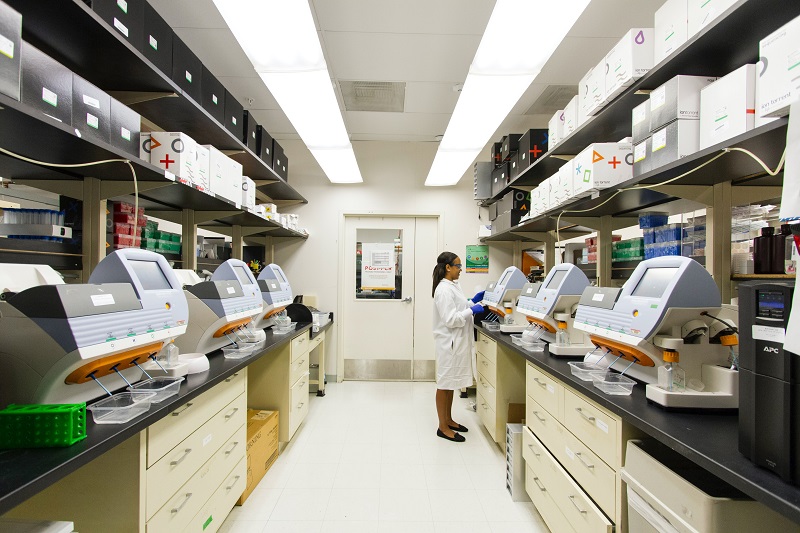A recent change to the Use Classes Order system in England is already having a substantial impact on town centres: both the composition of future high streets, and more specifically, the various roles that healthcare will play in high streets of the future.
“The new Class E use class category which has been created for commercial, business, and services is wide ranging in use and will create greater flexibility for changes in use between what were previously separate use classes,” explains Huw Mellor, partner at property consultancy, Carter Jonas.
“This includes shops, office buildings, research and development facilities, clinics, health centres, creches, day nurseries, day centres, gyms, and most indoor recreation spaces.
The new Class E use class category is wide ranging and will create greater flexibility for changes in use between what were previously-separate use classes
“For instance, a surgery may now convert to a soft play centre, a research facility to a retail unit, or a dentist to a day nursery without the need for planning permission.”
This change has come about to help protect the future of our high streets and town centres.
And the policy shift indicates a belief that alternative occupants – particularly those, such as healthcare, which are less dependent on economic cycles – are an important component to the solution.
Carter Jonas recently examined the potential impact of these changes by analysing data on the stock of 30 of the largest city centre retail markets in England, not including London.
The 30 centres were found to have a total retail stock of 55 million sq ft and office space equating to 145 million sq ft.
This equates to almost 200 million sq ft of retail and office space, across these 30 town centres, that has the potential to transfer to other uses contained within Class E.
Mellor said: “Prior to the COVID-19 pandemic the potential for a GP surgery to relocate to a former retail or commercial unit was not only complicated by planning issues, but was unlikely to be financially viable.
“However, with a significant number of shops now redundant, landlords have taken a more-flexible approach to accommodating those tenants that are unlikely to be impacted by future recessions or lockdowns.”
And that is exactly what is happening.
Exacerbated by the pandemic, entire rows of shops are now closed, and large department stores which once provided the ‘anchor’ to major shopping centres, along with convenience, footfall and employment, are closing at an alarming rate.
With a significant number of shops now redundant, landlords have taken a more-flexible approach to accommodating those tenants that are unlikely to be impacted by future recessions or lockdowns
And, in many instances it is healthcare occupants which are taking up these properties.
Mellor said: “In Oxford, where I am based, a large four-storey Debenhams department store which had served the city since the 1800s as a retail premises, closed in 2020.
“But the building will not stand empty for long. Now that it is known to be vacant, we have been contacted by various life sciences operators enquiring after its potential suitability for their use.
“Increasingly, these types of businesses are looking for lab space in cities where they can work closely alongside universities and attract young professionals.
“That such central and iconic buildings might be occupied by a life sciences company represents a significant step forward for the industry which traditionally, tend to be located in out-of-town science parks.”
A change of similar proportions is being seen at the Clarendon Centre, also in Oxford.

Carter Jonas has worked on a number of health schemes in Oxford which are taking advantage of the changes to legislation
This 1980s covered shopping centre is currently allocated purely for retail use.
But a planning application submitted recently by Carter Jonas reduces the predominant retail component and is now set to include life sciences, research and development facilities, along with other mixed uses, including student accommodation.
“The future Clarendon Centre will no longer be primarily a shopping centre, but a mixed-use building with healthcare at its heart,” explains Mellor.
“This again, will benefit local healthcare and medical research organisations, as well as bringing about viability and vitality.”
As we look forward to the Government fulfilling its election promise of creating 40 new hospitals, the potential for diversification, new locations, and integration with other facilities, including transport networks, is much improved
It was reported recently by Planning magazine that amid the Coronavirus-instigated economic crisis currently battering most high streets, few landlords, occupiers, or developers have so far made use of the new freedoms brought about by the use class relaxation.
But, for healthcare, it is the opposite.
Mellor said: “On a national scale, the NHS’s estate rationalisation programme aims to release surplus land for much-needed housing, nursing homes, and a host of other facilities to recycle capital into the health service.
“And it now has much greater freedom with which to do so.
“As we look forward to the Government fulfilling its election promise of creating 40 new hospitals, the potential for diversification, new locations, and integration with other facilities, including transport networks, is much improved.
“Healthcare may be the answer to many more of the nation’s problems than we first thought.”




